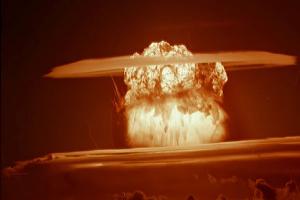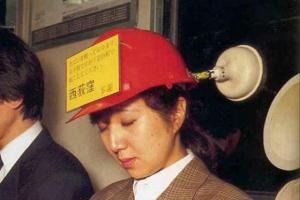Alexander Column (Russia) - description, history, location. Exact address, phone number, website. Tourist reviews, photos and videos.
- Tours for May in Russia
- Last minute tours in Russia
Previous photo Next photo



I erected a monument to myself, not made by hands,
The people's path to him will not be overgrown,
He ascended higher with his rebellious head
Alexandrian Pillar.
A. S. Pushkin
One of the most famous monuments of St. Petersburg, the Alexander Column is familiar to each of us literally from school. With the light hand of the beloved poet, everyone began to call the monument the Alexander Column, although, in fact, this is a poetic delight, and the monument has been called the Alexander Column for almost 200 years.
The Alexandria Column was erected on Palace Square under Nicholas I in 1834 by the architect Auguste Montferrand.
And the 47.5 m high monument was supposed to remind of Russia’s victory over France in 1812. The idea arose to erect a monument in the center of Palace Square near Karl Rossi, and as a result of an open competition, exactly the project that we now have the pleasure of seeing was selected .
The Alexander Column is the tallest column in the world made of solid stone.
The name of the Alexander Column, on the one hand, is associated with Emperor Alexander I, who defeated Napoleon, and on the other, with the Faros (Alexandria) lighthouse, which is one of the seven wonders of the world, personifying the ultimate level of human achievement. Alexander's column was supposed to surpass all existing columns in the world. Indeed, to this day the Alexander Column is the tallest column in the world made of solid stone. And to lift this grandiose monolith onto a pedestal, the architects of St. Petersburg created a special lifting system.
At the top of the monument, the work of B. Orlovsky is an angel, whose face the sculptor gave the features of Alexander I. The angel trampling on a snake on the top of the column symbolizes the peace and tranquility that Russia brought to Europe after defeating Napoleon. The bas-reliefs on the pedestal of the Alexander Column in allegorical form represent the glory of Russian weapons and symbolize courage Russian army: They depict Victory and Glory, recording the dates of memorable battles, Peace and Justice, Wisdom and Prosperity.
Figures and facts
The Alexander Column is made of red granite, processed not in St. Petersburg, but in the Pyuterlak quarry near Vyborg, and the figure of the angel is made of polished pink granite. In order to deliver the convoy to St. Petersburg, a special vessel was needed, which was towed by two steamships. 1250 piles, each 6 meters long, were driven under the base of the pedestal of the Alexander Column. The column was installed using scaffolding and capstans specially constructed in St. Petersburg.
It is curious that the installation took only 1 hour and 45 minutes, and 2,000 soldiers and 400 workers took part in lifting the column onto the pedestal.
The column itself weighs 600 tons. It is not dug into the ground or supported by a foundation, but is supported solely by accurate calculation and own weight.
The sculptor gave the face of the angel on top of the monument the facial features of Alexander I.
The height of the angel crowning the Alexander Column is 4.26 m, in his hands he holds a cross 6.4 m high. The height of the pedestal on which the Alexander Column rises is 2.85 m. And the weight of the entire structure is 704 tons. Such is the greatness of Russian weapons, a monument to the victory not only of the Russian army, but also of the entire people, victory over what was impossible for others to defeat.
How to get there
The Alexander Column rises in the center of Palace Square in St. Petersburg. To get to the square and the monument, you need to use underground transport and get to the Nevsky Prospekt station, then move to the beginning of Nevsky Prospekt, focusing on the Admiralty spire. From the intersection of Nevsky and Admiralteysky Prospekts there is a view of Palace Square with the Alexander Column in the center. This is what you were looking for.
The Alexander Column is one of the most famous monuments of St. Petersburg. It is often mistakenly called the Pillar of Alexandria, after Pushkin’s poem “Monument”. Erected in 1834 by order of Emperor Nicholas I in honor of the victory of his elder brother, Emperor Alexander I, over Napoleon. Style - Empire. Installed in the center of Palace Square, in front of the Winter Palace. The architect was Auguste Montferrand.
The monument is made of solid red granite. Its total height is 47.5 m. The top of the column is decorated with a figure of an angel of peace cast in bronze. It stands on a hemisphere, also made of bronze. In the angel's left hand is a cross, with which he tramples the serpent, and he extends his right hand to the sky. The features of Emperor Alexander I appear in the face of the angel. The height of the angel is 4.2 m, the height of the cross is 6.3 m. The column is installed on a granite pedestal. It is noteworthy that it stands without additional supports, only under the influence own strength gravity. The pedestal is decorated with bronze bas-reliefs. On the side facing the palace there is an inscription: “To Alexander I. Grateful Poccia.”
Under these words you can see ancient Russian weapons and figures symbolizing Peace and Victory, Mercy and Justice, Abundance and Wisdom. On the sides there are 2 allegorical figures: Vistula - in the form of a young girl and Neman - in the form of an old Aquarius. At the corners of the pedestal are double-headed eagles, with laurel branches clutched in their claws. In the middle, in an oak wreath, the “All-Seeing Eye” is depicted.
The stone for the column was taken from the Pieterlak quarry located in Finland. This is one of the grandest granite monoliths in the world. Weight – more than 600 tons.
The work was fraught with enormous difficulties. First of all, it was necessary to very carefully separate a solid granite piece of the required size from the rock. Then, right there on the spot, this mass was finished, giving it the shape of a column. Transportation was carried out by water on a specially built vessel.
At the same time, in St. Petersburg, on Palace Square, the foundation was being created. 1250 pine piles were driven to a depth of 36 m, and hewn blocks of granite were laid on them to equalize the area. The largest block was then placed as the basis for the pedestal. This task was carried out at the cost of enormous efforts and large quantity mechanical devices. When the foundation was laid, it was bitterly cold, and for better adhesion cement mortar added vodka. A bronze box with coins that were minted in honor of the victory of 1812 was placed in the middle of the foundation.
It seems that the column represents the exact center of Palace Square. However, this is not so: it is installed 140 m from the arch of the General Staff building and 100 m from the Winter Palace. The installation of the column itself was extremely difficult. On both sides of the pedestal, scaffolding up to 22 fathoms high was built. The column was rolled along an inclined plane onto a special platform and wrapped in rope rings to which blocks were attached. Corresponding blocks were also installed on top of the scaffolding.
On August 30, 1832, the column was raised. Emperor Nicholas I and his family arrived at Palace Square. Many people came to watch this action. People crowded into the square, at the windows and on the roof of the General Staff building. 2000 soldiers grabbed the ropes. Slowly the column rose and hung in the air, after which the ropes were released, and the granite block quietly and accurately sank onto the pedestal. A loud “Hurray!” rang across the square, and the sovereign, inspired by success, said to the architect: “Montferrand, you have immortalized yourself!”
After 2 years, the final finishing of the column was completed, and the consecration ceremony was performed in the presence of the emperor and the 100,000-strong army. The Alexander Column is the tallest monument in the world, created from a single piece of granite and third in height after the Column of the Grand Army in Boulogne-sur-Mer and London's Trafalgar Column. It is taller than similar monuments in the world: the Vendôme Column in Paris, the Roman Trajan's Column and Pompey's Column in Alexandria.
N. EFREMOVA, State Museum of Urban Sculpture, St. Petersburg
The Alexander Column (1829-1834) is the world's largest granite monolith, standing under its own weight.
The rise of the Alexander Column. Lithograph from 1836.
Science and life // Illustrations
The top of the Alexander Column is being examined by a steeplejack.
The back of an angel is striking in the care of the coinage.
The Alexander Column is surrounded metal scaffolding. Restoration is underway. Photo from 2002.
On Palace Square in St. Petersburg appeared scaffolding. The restoration of the Alexander Column is underway. It was created in 1834 according to the design of the French sculptor Auguste Ricard Montferrand as a monument to Emperor Alexander I (on one of the faces of the pedestal there is an inscription: “To Alexander I - Grateful Russia”). Due to its artistic expressiveness, the column immediately began to be perceived as one of the most solemn triumphal structures in honor of the victories of the Russian army, in honor of the victories of the “eternal memory of 1812.”
The French architect Auguste Ricard Montferrand (1786-1858) managed to attract the attention of Alexander I by presenting him with his own “Album of various architectural projects, dedicated to His Majesty the Emperor of All Russia Alexander I." This happened immediately after the Russian troops entered Paris in April 1814. Among the drawings were projects for an equestrian statue, a colossal obelisk, a Triumphal Arch "To the Brave Russian Army" and "Columns in Honor of Universal Peace", having a certain similarity with the future project of the Alexander Column. In addition to the drawings themselves, a short list of the necessary building materials and the cost of expenses was indicated. Thus, Montferrand managed to show himself not only as an excellent draftsman, connoisseur and admirer of classical art, but also as a technically competent specialist. The architect received a kind, albeit official, invitation to come to St. Petersburg and was not afraid to take advantage of it. In 1816 he came to the northern capital, where he worked for more than 40 years, until his death.
Montferrand received the position of court architect and began work on rebuilding St. Isaac's Cathedral. He was already quite famous by the time he decided to take part in the competition to design a monument to Alexander I. The competition was announced in 1829 by Emperor Nicholas I in memory of the “unforgettable brother.” Montferrand presented a project for a colossal obelisk, quite rightly believing that any sculptural monument would be lost in the vastness of Palace Square. The emperor ordered the obelisk to be replaced with a column. And the architect proposes, taking as a basis a wonderful antique example - Trajan's Column in Rome, to create a work that surpasses this masterpiece.
The project is approved, and the work, which has no analogues in terms of painstaking and exhausting severity, begins. For the column, Montferrand decided to use a monolith that he discovered in granite scraps near Vyborg, in Puterlax, where the stone for the columns of St. Isaac's Cathedral was mined. The granite block was separated from the rock by hand over the course of two years. To deliver the stone to St. Petersburg, a special boat “St. Nicholas” was built, and on it the rough-hewn column was delivered first to Kronstadt, and then to St. Petersburg, to the Palace Pier. The most difficult stage lay ahead - installing the column on a pedestal that had been built earlier. They made scaffolding, as well as many blocks, winches and ropes, with the help of which they were going to lift the monolith.
On August 30, 1832, on Palace Square, in front of a huge crowd of people, the column was installed on a pedestal. The entire operation lasted 100 minutes. The Emperor, congratulating the architect, said: “Montferrand, you have immortalized yourself.” But the granite still had to be finally processed, numerous decorative and symbolic details, bas-reliefs and sculptural completion had to be cast in bronze.
There have been various proposals regarding the latter. They approved the project of the sculptor B.I. Orlovsky: “The figure of an Angel with a cross, which tramples on enmity and malice (snake) at the foot, depicts a striking thought - thereby conquer.” (The model also took into account the urgent desire of the imperial house “to give the angel a portrait resemblance to the face of Alexander I.”) The sculptural top, bas-reliefs depicting military armor, weapons and allegorical figures, and other decorative details were cast from bronze at the C. Berd factory.
And again on August 30, but already in 1834, the grand opening of the monument took place. Since the time of Peter I, August 30 (September 12, new style) has been celebrated as the day of the holy noble prince Alexander Nevsky, the heavenly protector of St. Petersburg. On this day, Peter I concluded “eternal peace with Sweden”; on this day the relics of Alexander Nevsky were transferred from Vladimir to St. Petersburg. That is why the angel crowning the Alexander Column has always been perceived, first of all, as a protector and as a guardian.
The angel protected and blessed. Together with him, the city experienced all historical collisions: revolutions, wars, environmental adversities. In the post-revolutionary period, it was covered with a canvas cap, painted red, and camouflaged with balloons lowered from a hovering airship. A project was being prepared to install a huge statue of V.I. Lenin instead of an angel. But providence wanted the angel to survive. During the Great Patriotic War the monument was covered only 2/3 of the height and the angel was injured: there was a shrapnel mark on one of the wings.
The safety of the sculpture was largely ensured by the reliability of the author's design solution. The figure of an angel with a cross and a snake is cast together with a platform, shaped like the completion of the dome. The dome, in turn, is crowned by a cylinder mounted on a rectangular platform - the abacus. Inside the bronze cylinder is the main supporting mass, consisting of multilayer masonry: granite, brick and two layers of granite at the base. A metal rod runs through the entire massif, which was supposed to support the sculpture. The most important condition reliability of fastening of the sculpture - tightness of the casting and absence of moisture inside the support cylinder.
The monument was constantly monitored, additional inspections and calculations of the stability margin were carried out. Unfortunately, harmful vibration loads increase over the years. The last time a complete restoration of the monument using scaffolding was carried out was in 1963. Since the late 1980s, the curators of the State Museum of Urban Sculpture had reasons for concern: whitish streams flowed from under the bronze capital of the column and tongues of moisture did not dry out even on the hottest days of summer. There could only be one reason: water getting inside the sculptural top and then into its base. Water, seeping through the brickwork, washes away the binding solution, and, in addition, in a humid environment, the process of corrosion of the support rod is actively underway.
In 1991, for the first time in the history of the St. Petersburg restoration school, a visual examination of the sculpture crowning the Alexander Column was carried out. Verkholazov raised the elevator of a special fire hydrant "Magirus Deutsch" to the angel. Having secured themselves with ropes, the steeplejacks made photo and video recordings of the sculpture. A significant number of cracks, leaks, and deterioration of sealing materials were discovered. But it took another 10 years of anxiety and a tireless search for funding to, having installed reliable stationary scaffolding, begin a professional and comprehensive survey of the monument.
In the summer of 2001, curators and restorers, having climbed a little over 150 steps metal stairs, went on a first date with an angel. Seeing it up close, you are shocked: it is huge and at the same time elegant. Extremely expressive and concise. The masterly thoroughness of the chasing and the plastic elaboration of every detail is striking: curly hair, parted and falling onto the shoulders, frames the beautiful face, the eyes are half-closed with eyelids, the gaze is directed downwards. He is so focused that it is impossible not to feel that the angel is looking inside himself. It is useless and unnecessary to look for any portrait resemblance. The angel looks just like himself! Extremely expressive gesture right hand, raised in a blessing gesture to the sky. The running of bare feet, visible from under the flowing clothes, is light and swift. The huge wings are airy, every feather is minted. In the open mouth of the defeated snake, teeth and a poisonous sting are visible.
Upon inspection, we saw, in addition to cracks, divergences of connecting seams that were once held together with lead. Lead is completely destructured. There are still hatches on the angel's head and shoulder, intended for removing molding earth and reinforcement. In the hem of the clothing there is a flange (flat ring) with bolts, partially lost. The flange was removed and the sculpture was examined from the inside using a special device - a fiber-optic endoscope. It turned out that both the sculpture and the cross did not have a supporting rod. The rod, passing through the internal masonry of the cylinder, rests with its upper end against the “sole” of the angel, that is, at the spherical end of the cylinder. The sculpture's wings, cast in three parts, are bolted together and attached to the back. Revealed on the angel's head through hole size 70 x 22 mm.
The conclusion was disappointing: moisture gets inside the sculpture, which seeps into the cylinder and into the abacus. The cylinder is deformed, the walls are “bulging out,” and the connecting bolts are missing. By removing 54 copper screws, restorers partially exposed the bronze lining of the abacus. Internal brickwork turned out to be destroyed. There is no binding mortar between the bricks, and the whole thing is extremely saturated with moisture. During the inspection, samples were taken and relevant studies of bronze contamination and patina quality were carried out. In general, the condition of the bronze surface is satisfactory; the damage to the “bronze disease” is fragmentary.
The design of the abacus plays an important role in the stable condition of the pommel. The fastening system included “ribs” made of brick. Opening the sheets of bronze lining of the abaca revealed a completely depressing, emergency state of the internal supports: a complete absence of binder, the brick was destroyed (collected by restorers using a brush). The new supports are made of granite, eliminating concerns that the 16-tonne abacus could fall or tilt.
The attention of curators and restorers is focused not only on eliminating cracks and protecting the bronze surface, but, first of all, on drying the internal masonry. It should be strengthened with the latest solutions, as well as additional bolts and screws installed.
More than 110 traces of shell fragments were found on the reliefs of the monument's pedestal. The “armor” of Alexander Nevsky was also pierced by shrapnel.
Due to the interaction of various metals - bronze and cast iron, there is an active process of corrosion and destruction of bronze. Restorers face painstaking work to “heal the wounds of war.”
Ultrasonic examinations of the column are now being carried out to detect visible and invisible cracks on the surface and in the thickness of the granite. At the same time, the serious problem of restoring granite at the base is being solved. Under the influence of the weight of the column, the granite here is covered with cracks. This is exactly what Montferrand feared when he proposed enclosing the bottom of the column in a bronze rim, but the proposal was not implemented then.
The methodology for carrying out such large-scale and unparalleled restoration and conservation operations was developed by the specialists of Intarsia LLC carrying out the work. The restoration is financed by the Moscow association Hazer International Rus.
By the spring of 2003, the Alexander Column will be strengthened. The four floor lamps located nearby will also acquire their original appearance. Restorers intend to recreate the fence designed by Montferrand in 1836. And then the monument, conceived and implemented as a single artistic and architectural ensemble, will regain the solemn splendor of a triumphal monument - a true St. Petersburg miracle. Alexandria pillar The official, historical name of the monument to Alexander I on Palace Square in St. Petersburg is the Alexander Column. However, often, referring to the famous poem by A. S. Pushkin, the Alexander Column is called the “Alexandria Pillar”:
I erected a monument to myself
not made by hands,
It won't grow on him
folk trail,
He ascended higher with his head
rebellious
Alexandria
pillar
On the topic, this poem by A. S. Pushkin echoes the ode of the ancient Roman poet Horace (65-8 BC) “To Melpomene.” Epigraph to Pushkin's poem: Exegi monumentum (lat.) - I erected a monument - taken from Horace's ode.
Among the Seven Wonders of the World, the colossal lighthouse tower, erected in Alexandria at the end of the 3rd century, is famous. BC e. and had a height of 180 meters. (In architecture, a pillar is a tower, a tower-like structure.) Pushkin, an excellent expert in mythology, certainly knew about ancient monuments. It should be noted that the poem was written in 1836, when the Alexander Column had been towering over Palace Square for two years. And this monument could not leave the poet indifferent. Pushkin’s metaphor is multi-valued; it includes ancient monuments and at the same time is a response to the monument to Alexander I.
On Palace Square in St. Petersburg stands a unique monument - a column topped with a sculptural image of an angel with a cross, and at the base framed with relief allegories of victory in the Patriotic War of 1812.
Dedicated to the military genius of Alexander I, the monument is called the Alexander Column, and with light hand Pushkin is called the “Pillar of Alexandria”.
The construction of the monument took place in the late 20s - early 30s of the 19th century. The process was documented, and therefore there should be no secrets in the appearance of the Alexander Column. But if there are no secrets, you really want to invent them, don’t you?
What is the Alexander Column made of?
The network is full of assurances about the discovered layering in the material from which the Alexander Column is made. They say that the masters of the past, not being able to mechanically process solid, learned to synthesize granite-like concrete - from which the monument was cast.The alternative opinion is even more radical. The Alexander Column is not monolithic at all! It is made up of separate blocks, stacked on top of each other like children's cubes, and the outside is lined with plaster with a large amount of granite chips.
There are even fantastic versions that can compete with the notes from Ward No. 6. However, in reality the situation is not so complicated, and most importantly, the entire process of manufacturing, transportation and installation of the Alexander Column is documented. The history of the emergence of the main monument of Palace Square is described almost minute by minute.
Choosing a stone for the Alexander Column
Auguste Montferrand, or, as he called himself in the Russian manner, August Montferrand, before receiving the order for a monument in honor of the victory in the Patriotic War of 1812, built St. Isaac's Cathedral. During procurement work in a granite quarry on the territory of modern Finland, Montferrand discovered a monolith measuring 35 x 7 meters.Monoliths of this kind are very rare and even more valuable. So there is nothing surprising in the thriftiness of the architect, who noticed but did not put into use a huge granite slab.

Soon the emperor had the idea of a monument to Alexander I, and Montferrand drew a sketch of the column, keeping in mind the availability of suitable material. The project was approved. The extraction and delivery of stone for the Alexander Column was entrusted to the same contractor who provided the material for the construction of Isaac.
Skillful mining of granite in a quarry
To manufacture and install the column in the prepared place, two monoliths were required - one for the core of the structure, the other for the pedestal. The stone for the column was cut first.First of all, the workers cleared the granite monolith of soft soil and any mineral debris, and Montferrand carefully examined the surface of the stone for cracks and defects. No flaws were found.
Using hammers and forged chisels, workers roughly leveled the top of the mass and made slotted recesses for attaching the rigging, after which it was time to separate the fragment from the natural monolith.
A horizontal ledge was carved along the lower edge of the blank for the column along the entire length of the stone. On the upper plane, stepping back a sufficient distance from the edge, a furrow a foot deep and half a foot wide was cut along the workpiece. In the same furrow, holes were drilled by hand, using forged bolts and heavy hammers, at a distance of a foot from each other.
Steel wedges were placed in the finished wells. In order for the wedges to work synchronously and create an even crack in the granite monolith, a special spacer was used - an iron bar laid in a furrow and leveling the wedges into an even palisade.
At the command of the elder, the hammermen, placed one person at a time in two or three wedges, got to work. The crack ran exactly along the line of the wells!
Using levers and capstans (winches with vertical arrangement shaft) the stone was overturned onto an inclined bed of logs and spruce branches.

The granite monolith for the column pedestal was also mined using the same method. But if the blank for the column initially weighed about 1000 tons, the stone for the pedestal was cut off two and a half times smaller - “only” 400 tons in weight.
The quarry work lasted two years.
Transportation of blanks for the Alexander Column
The “light” stone for the pedestal was delivered to St. Petersburg first, in the company of several granite boulders. The total weight of the cargo was 670 tons. The loaded wooden barge was placed between two ships and safely towed to the capital. The ships arrived in the first days of November 1831.The unloading was carried out using the synchronized operation of ten dragging winches and took only two hours.
Transportation of the larger billet was postponed until next summer. Meanwhile, a team of stonemasons chipped off excess granite from it, giving the workpiece a rounded column shape.
To transport the column, a ship with a carrying capacity of up to 1,100 tons was built. The workpiece was sheathed with board in several layers. On the shore, for ease of loading, a pier was built from log cabins ballasted with wild stones. The pier flooring area was 864 square meters.
A log and stone pier was built in the sea in front of the pier. The road to the pier was widened and cleared of vegetation and stone outcrops. Particularly strong remains had to be blown up. From many logs they made a kind of pavement for the smooth rolling of the workpiece.
Moving the prepared stone to the pier took two weeks and required the efforts of more than 400 workers.
Loading the workpiece onto the ship was not without troubles. The logs, laid out in a row with one end on the pier and the other on board the ship, could not withstand the load and broke. The stone, however, did not sink to the bottom: the ship, propped between the pier and the pier, prevented it from sinking.

The contractor had enough people and lifting equipment to correct the situation. However, to be sure, the authorities called soldiers from a nearby military unit. The help of several hundred hands came in handy: in two days the monolith was lifted on board, strengthened and sent to St. Petersburg.
No one was injured during the incident.
Preparatory work
To avoid accidents when unloading the column, Montferrand rebuilt the St. Petersburg pier so that the side of the ship adjoined it without gaps along its entire height. The measure was successful: the transfer of cargo from the barge to the shore went flawlessly.Further movement of the column was carried out along inclined floorings with the final goal in the form of a high wooden platform with a special cart on top. The trolley, moved on supporting rollers, was intended for longitudinal movement of the workpiece.
The stone cut for the pedestal of the monument was delivered to the installation site of the column in the fall, covered with a canopy and given to the disposal of forty stonemasons. Having trimmed the monolith from above and from all four sides, the workers turned the stone over onto a sand pile in order to prevent the block from splitting.

After processing all six planes of the pedestal, the granite block was placed on fundamental basis. The foundation for the pedestal rested on 1,250 piles driven into the bottom of the pit to an eleven-meter depth, sawn to level and embedded in the masonry. A cement mortar with soap and alcohol was laid on top of the four-meter masonry that filled the pit. The flexibility of the mortar pad made it possible to position the pedestal monolith with high precision.
In a few months masonry and the cement pad of the pedestal set and gained the required strength. By the time the column was delivered to Palace Square, the pedestal was ready.
Column installation
Installing a column weighing 757 tons is not an easy engineering task even today. However, engineers two hundred years ago coped with solving the problem “excellently.”The design strength of the rigging and auxiliary structures was threefold. The workers and soldiers involved in raising the column acted with great enthusiasm, notes Montferrand. Proper placement of people, impeccable management and ingenious scaffolding design made it possible to lift, level and install the column in less than an hour. It took another two days to straighten the verticality of the monument.
Finishing surfaces, as well as the installation of architectural details of the capital and sculpture of angels took another two years.
It is worth noting that there are no fastening elements between the base of the column and the pedestal. The monument rests solely due to its gigantic size and the absence of any noticeable earthquakes in St. Petersburg.
Links to additional information
Drawings and other documents about the construction of the Alexander Column in St. Petersburg:And the Alexander Column has been decorating Palace Square since 1834: Nicholas I ordered its erection in honor of the victory of Alexander I over Napoleon. Together with the Kultura.RF portal, we recall interesting details from the history of this building.
Alexander Column, St. Petersburg. Photo: meros.org
The first sketches of the Alexander Obelisk

Stepan Shchukin. Portrait of Alexander I. Early 1800s. State Russian Museum, St. Petersburg

Evgeny Plyushar. Portrait of Auguste Montferrand. 1834.

Franz Kruger. Portrait of Nicholas I. 1852. Hermitage, St. Petersburg
In 1829, Nicholas I announced an open competition for sketches of a monument in memory of Alexander I. Auguste Montferrand - his design for the Alexander Column was subsequently realized - first proposed installing a 25-meter-high granite obelisk on the square. At the same time, Montferrand developed several projects for the monument’s pedestal. In one of the sketches, he proposed decorating the pedestal with bas-reliefs of Fyodor Tolstoy, which illustrated the events of the Patriotic War of 1812, and the figure of a horseman, in front of whom a double-headed eagle flies, and behind - the goddess of victory. In another sketch he depicted figures of elephants supporting an obelisk.
"Trajan's Column appeared before me"

Alexander Column, figure of an angel

Alexander Column, pedestal
However, not a single obelisk project was accepted. Montferrand was asked to create something like the Vendôme Column in Paris or Trajan's Column in Rome. As the architect wrote: “Trajan’s Column appeared before me as a prototype of the most beautiful thing that a person of this kind can create. I had to try to come as close as possible to this majestic example of antiquity, as was done in Rome for the Antonine Column, in Paris for the Napoleon Column".
Montferrand's column also had several design options: in addition to the sketch with the figure of an angel, the architect proposed crowning the obelisk with a cross entwined with a snake, or installing the figure of Alexander Nevsky at the top.
Finnish granite for a Russian monument

Vasily Tropinin. Portrait of Samson Sukhanov. 1823. Museum of V.A. Tropinin and Moscow artists of his time, Moscow

Pyuterlach quarry, separation of a block of stone from a rock. Lithograph from the book by Auguste Montferrand. "Plans and details of a monument dedicated to the memory of Emperor Alexander", 1836

Tilting a mass for a column rod in a quarry. Lithograph from the book by Auguste Montferrand. "Plans and details of a monument dedicated to the memory of Emperor Alexander", 1836
Montferrand chose the material for his monument in advance: granite from Finland was used for the Alexander Column. Both the column itself and the stones for its foundation were cut from one rock - the largest of them weighed more than 400 tons. They were hewn out over two years - from 1830 to 1832 - in the Pyuterlak quarry. About 250 people worked there, and they were led by the famous stonemason Samson Sukhanov.
Transportation on "St. Nicholas"

Loading the column onto the ship. Lithograph from the book by Auguste Montferrand. "Plans and details of a monument dedicated to the memory of Emperor Alexander", 1836

Delivery of blocks for the pedestal of the Alexander Column. Lithograph from the book by Auguste Montferrand. "Plans and details of a monument dedicated to the memory of Emperor Alexander", 1836

Moving the block for the pedestal of the Alexander Column from the embankment. Lithograph from the book by Auguste Montferrand. "Plans and details of a monument dedicated to the memory of Emperor Alexander", 1836
Transporting blanks for the obelisk from Finland to St. Petersburg was not an easy task. To transport the column by water, a special boat “St. Nicholas” was built with a carrying capacity of more than 1000 tons. 600 soldiers were loaded onto its board, and they almost dropped the monolith into the water. The St. Nicholas and the convoy were towed by two steamships to St. Petersburg.
Pine piles, cement with soap and a box of coins

Installation of the pedestal on the foundation. Lithograph from the book by Auguste Montferrand. "Plans and details of a monument dedicated to the memory of Emperor Alexander", 1836

Lifting a column onto an overpass. Lithograph from the book by Auguste Montferrand. "Plans and details of a monument dedicated to the memory of Emperor Alexander", 1836
When laying the foundation for the installation of the column, workers discovered piles: half a century earlier, Bartolomeo Rastrelli planned to erect a monument to Peter I here.
When installing the column, we used the innovative engineering developments of Augustine Betancourt, which by that time had already been tested during the construction of St. Isaac's Cathedral by Augustine Montferrand. Here the foundation was laid using the same technology as in Isaacia: 1,250 pine piles were driven into the bottom of the pit, and granite stone blocks were placed on them. A monolith weighing 400 tons was placed on the foundation, which became the base of the pedestal. The monolith was connected to the foundation with a special solution - vodka and soap were added to the cement. Thanks to this, the monolith could be moved until it “sits” perfectly. A commemorative box with coins minted in honor of the War of 1812 and a mortgage board were installed in the center of the foundation.
“Montferrand, you have immortalized yourself!”

Alexander Denisov. The rise of the Alexander Column. 1832

L.P.-A. Bichebois, A.J.-B. Bayo. The rise of the Alexander Column. 1834

Grigory Gagarin. Alexandria Column in the woods. 1832
The most difficult task facing the builders was installing the column. The developments made by Augustine Betancourt during the construction of St. Isaac's Cathedral were also useful here. He designed a special lifting system from scaffolding, capstans - mechanisms for moving goods - and block systems. First, the column was rolled up an inclined plane onto a special platform and secured to it. Then they began to lift the ropes placed on top of the scaffolding. About 2,500 people performed this operation for almost 40 minutes. Nicholas I was so impressed by the solemn rise that he exclaimed: “Montferrand, you have immortalized yourself!” After installing the column, it was sanded, polished and decorated - this took two years.
Sculptural decoration of the column

Alexander Column, figure of an angel. Photo: hellopiter.ru

Alexander Column, pedestal. Photo: nevsky.rf

Alexander Column, pedestal. Photo: fotokto.ru
The figure of an angel, almost five meters high, was made by sculptor Boris Orlovsky. The angel holds a cross in his left hand and raises his right hand to heaven. According to Montferrand's plan, the figure of the angel was supposed to be gilded, but due to the rush to open it, this decision was abandoned. On the pedestal of the column there are images of the all-seeing eye, under which there are double-headed eagles holding laurel garlands in their paws. Two winged female figures hold a sign with the text “To Alexander I - grateful Russia”; symbols of the Vistula and Neman rivers are depicted nearby. Other bas-reliefs depict allegories of Victory and Peace, Justice and Mercy and Wisdom and Abundance. Montferrand himself made the drawings for the design of the pedestal; based on them, artists made life-size sketches, and sculptors created molds for casting.
The tallest monument made of solid granite

Alexander Column. Photo: petersburg.center

The opening ceremony of the monument took place on September 11, 1834. The architect wanted to refuse to participate in the ceremony, but Nicholas I insisted, saying: “Montferrand, your creation is worthy of its purpose, you have erected a monument to yourself.”. For the celebration, special stands were erected on Palace Square to accommodate the imperial family and other distinguished guests.
“And no pen can describe the greatness of that moment when, following three cannon shots, suddenly from all the streets, as if born from the earth, in slender bulks, with the thunder of drums, columns of the Russian army began to march to the sounds of the Paris March... The ceremonial march began: Russian the army passed by the Alexander Column; This magnificent, unique spectacle in the world lasted for two hours... In the evening, noisy crowds wandered through the streets of the illuminated city for a long time, finally, the lighting faded, the streets were empty, and the majestic colossus was left alone with its sentry in a deserted square.”
Vasily Zhukovsky
Angel after the revolution

Restoration of the Alexander Column in 2002. Photo: armycarus.do

Restoration of the Alexander Column in 2002. Photo: petersburglike.ru
After the revolution, the figure of an angel on the Alexander Column was disguised with red cloth or balloons. There was a legend that they were planning to install a statue of Lenin instead, but this did not happen. The fence around the monument was melted down for ammunition in the 1930s. During the Great Patriotic War, the Alexander Column was not completely camouflaged, like many other architectural monuments of Leningrad, but only 2/3 of the height. The angel received shrapnel “wounds.” The column and the area around it were restored several times - in the 1960s, 1970s and 2000s.








